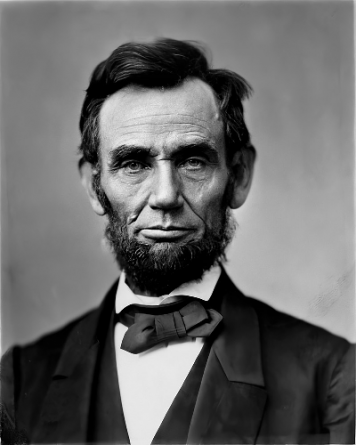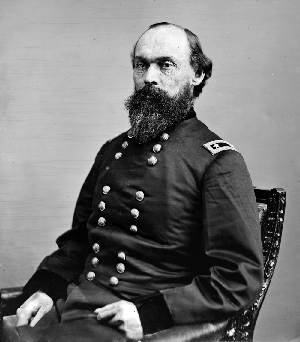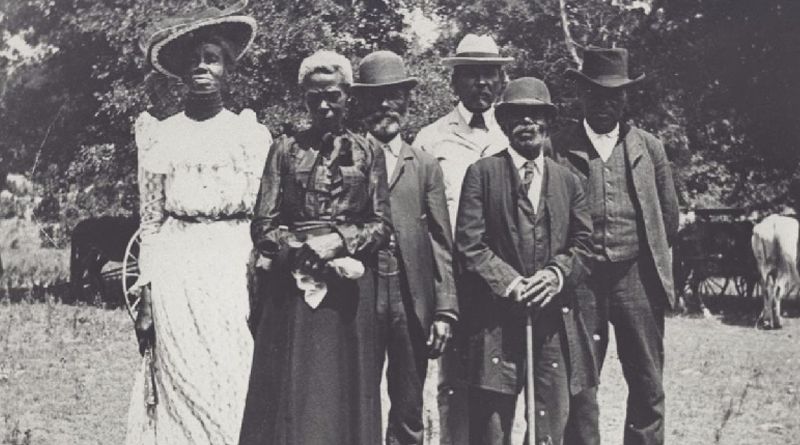Juneteenth, the oldest nationally celebrated commemoration of the ending of slavery in the United States, is celebrated on the 19th of June. The holiday commemorates the day that Union Army General Gordon Granger read of federal orders in the city of Galveston, Texas, proclaiming that all enslaved persons in the U.S. state of Texas were now free.
During the Civil War, Republican President Abraham Lincoln issued the preliminary Emancipation Proclamation on September 22, 1862, however, it wasn’t formally issued until January 1, 1863,.
[media-credit name=”Abraham Lincoln” align=”aligncenter” width=”356″] [/media-credit]
[/media-credit]
More isolated geographically, planters and other slaveholders had migrated into Texas from eastern states to escape the fighting, and many brought enslaved people with them, increasing by the thousands the enslaved population in the state at the end of the Civil War. Although most lived in rural areas, more than 1,000 resided in both Galveston and Houston by 1860, with several hundred in other large towns. By 1865, there were an estimated 250,000 enslaved people in Texas.
[media-credit name=”Galveston’s Ashton Villa – Carol M. Highsmith” align=”aligncenter” width=”800″] [/media-credit]
[/media-credit]
The news of General Robert E. Lee’s surrender on April 9, 1865, reached Texas later in the month. The western Army of the Trans-Mississippi did not surrender until June 2. On June 18, Deneral Granger arrived at Galveston Island with 2,000 federal troops to occupy Texas on behalf of the federal government. The following day, standing on the balcony of Galveston’s Ashton Villa, Granger read aloud the contents of “General Order No. 3″, announcing the total emancipation of those held as slaves:
[media-credit name=”Gordon Granger” align=”aligncenter” width=”300″] [/media-credit]
[/media-credit]
“The people of Texas are informed that, in accordance with a proclamation from the Executive of the United States, all slaves are free. This involves an absolute equality of personal rights and rights of property between former masters and slaves, and the connection heretofore existing between them becomes that between employer and hired labor. The freedmen are advised to remain quietly at their present homes and work for wages. They are informed that they will not be allowed to collect at military posts and that they will not be supported in idleness either there or elsewhere”
Celebrations date to 1866, at first involving church-centered community gatherings in Texas. It spread across the South and became more commercialized in the 1920s and 1930s, often centering on a food festival. During the Civil Rights movement of the 1960s, it was eclipsed by the struggle for postwar civil rights, but grew in popularity again in the 1970s with a focus on African American freedom and arts. By the 21st century, Juneteenth was celebrated in most major cities across the United States. Activists are campaigning for the United States Congress to recognize Juneteenth as a national holiday. Juneteenth is recognized as a state holiday or special day of observance in 47 of the 50 U.S. states.
Modern observance is primarily in local celebrations. Traditions include public readings of the Emancipation Proclamation, singing traditional songs such as “Swing Low, Sweet Chariot” and “Lift Every Voice and Sing”, and reading of works by noted African-American writers such as Ralph Ellison and Maya Angelou. Celebrations include rodeos, street fairs, cookouts, family reunions, park parties, historical reenactments, and Miss Juneteenth contests. The Mascogos, descendants of Black Seminoles, of Coahuila, Mexico, also celebrate Juneteenth.
[media-credit name=”An early celebration of Emancipation Day (Juneteenth) in 1900″ align=”aligncenter” width=”800″] [/media-credit]
[/media-credit]
Lincoln issued the Emancipation Proclamation as the nation approached its third year of bloody civil war. The proclamation declared “that all persons held as slaves” within the rebellious states “are, and henceforward shall be free.”
Despite this expansive wording, the Emancipation Proclamation was limited in many ways. It applied only to states that had seceded from the United States, leaving slavery untouched in the loyal border states. It also expressly exempted parts of the Confederacy (the Southern secessionist states) that had already come under Northern control. Most important, the freedom it promised depended upon Union (United States) military victory.
Although the Emancipation Proclamation did not end slavery in the nation, it captured the hearts and imagination of millions of Americans and fundamentally transformed the character of the war. After January 1, 1863, every advance of federal troops expanded the domain of freedom. Moreover, the Proclamation announced the acceptance of black men into the Union Army and Navy, enabling the liberated to become liberators. By the end of the war, almost 200,000 black soldiers and sailors had fought for the Union and freedom.
From the first days of the Civil War, slaves had acted to secure their own liberty. The Emancipation Proclamation confirmed their insistence that the war for the Union must become a war for freedom. It added moral force to the Union cause and strengthened the Union both militarily and politically. As a milestone along the road to slavery’s final destruction, the Emancipation Proclamation has assumed a place among the great documents of human freedom.
The original of the Emancipation Proclamation of January 1, 1863, is in the National Archives in Washington, DC. With the text covering five pages the document was originally tied with narrow red and blue ribbons, which were attached to the signature page by a wafered impression of the seal of the United States. Most of the ribbon remains; parts of the seal are still decipherable, but other parts have worn off.
The document was bound with other proclamations in a large volume preserved for many years by the Department of State. When it was prepared for binding, it was reinforced with strips along the center folds and then mounted on a still larger sheet of heavy paper. Written in red ink on the upper right-hand corner of this large sheet is the number of the Proclamation, 95, given to it by the Department of State long after it was signed. With other records, the volume containing the Emancipation Proclamation was transferred in 1936 from the Department of State to the National Archives of the United States.
Casualties for the American Civil War:
| Union dead: 364,511 |
Union wounded: 281,881 |
Total Union Loss: 646,392 |
|---|---|---|
| Confederate dead: 260,000 |
Confederate wounded: 194,000 |
Confederate Total Loss: 454,000 |
Total number of Dead in the Civil War: 624,511
Sources and Links:
https://ehistory.osu.edu/exhibitions/cwsurgeon/cwsurgeon/statistics
https://en.wikipedia.org/wiki/Juneteenth
https://www.juneteenth.com/history.htm
https://en.wikipedia.org/wiki/Abraham_Lincoln
https://www.archives.gov/exhibits/featured-documents/emancipation-proclamation#:~:text=President%20Abraham%20Lincoln%20issued%20the,and%20henceforward%20shall%20be%20free.%22




